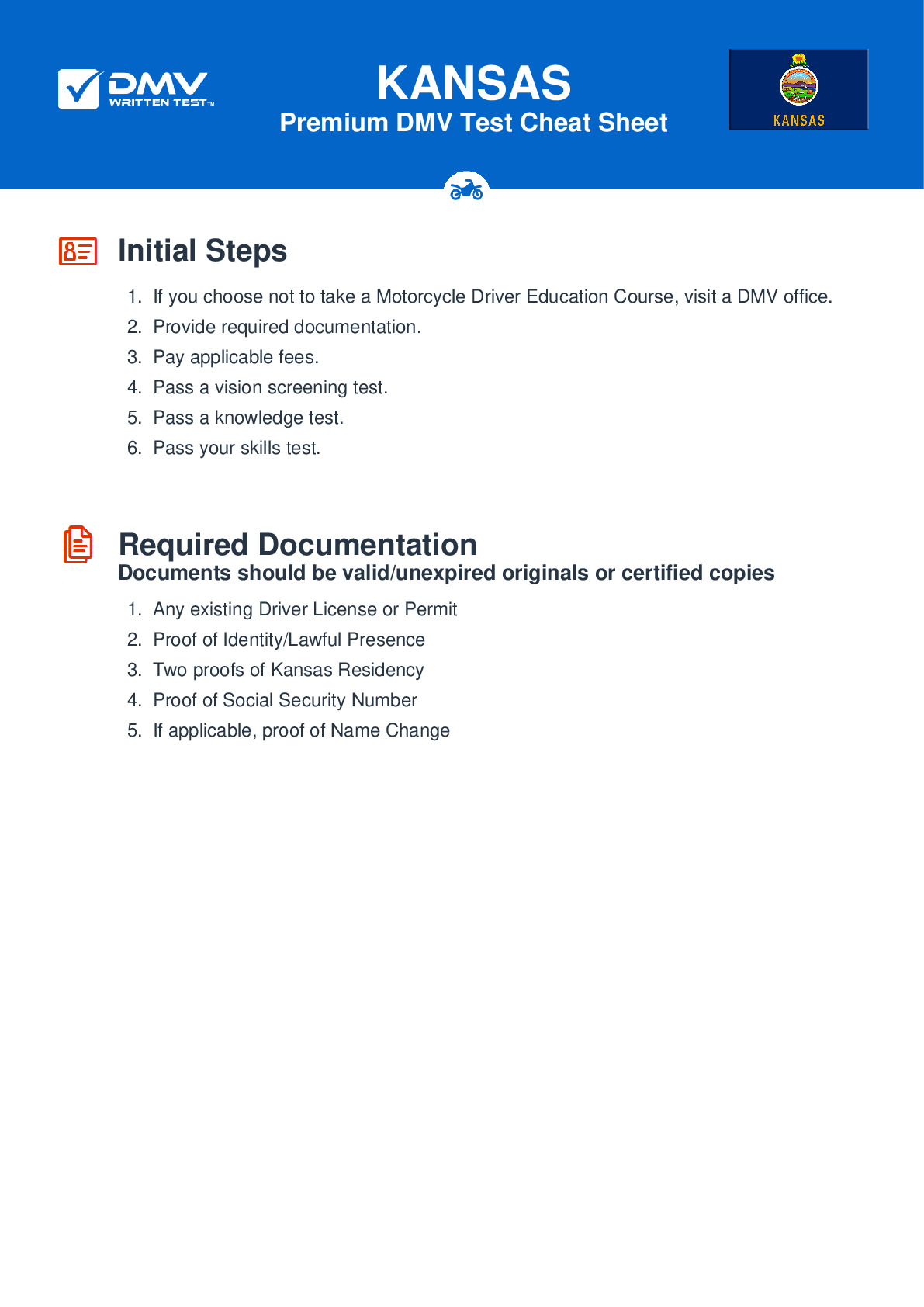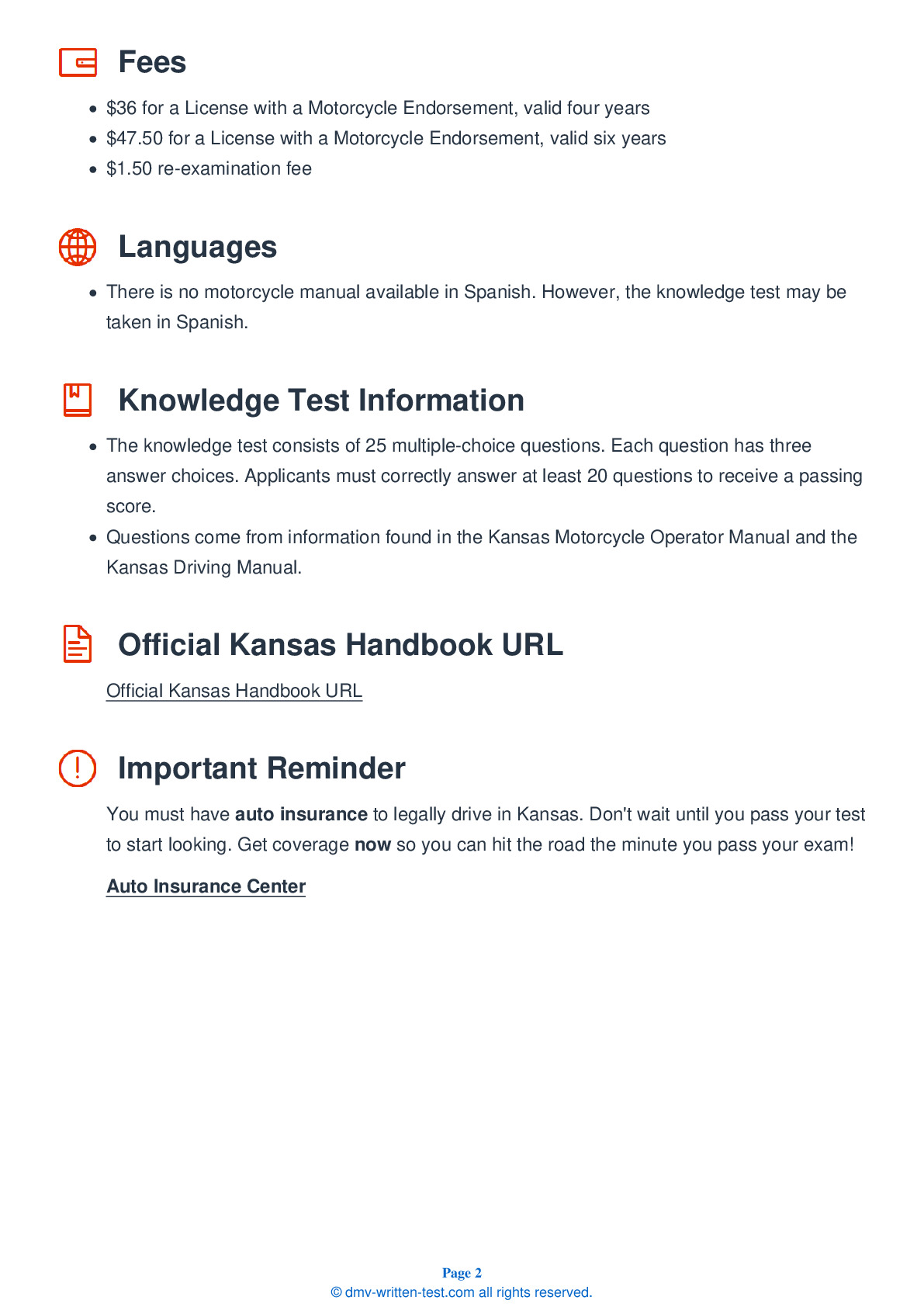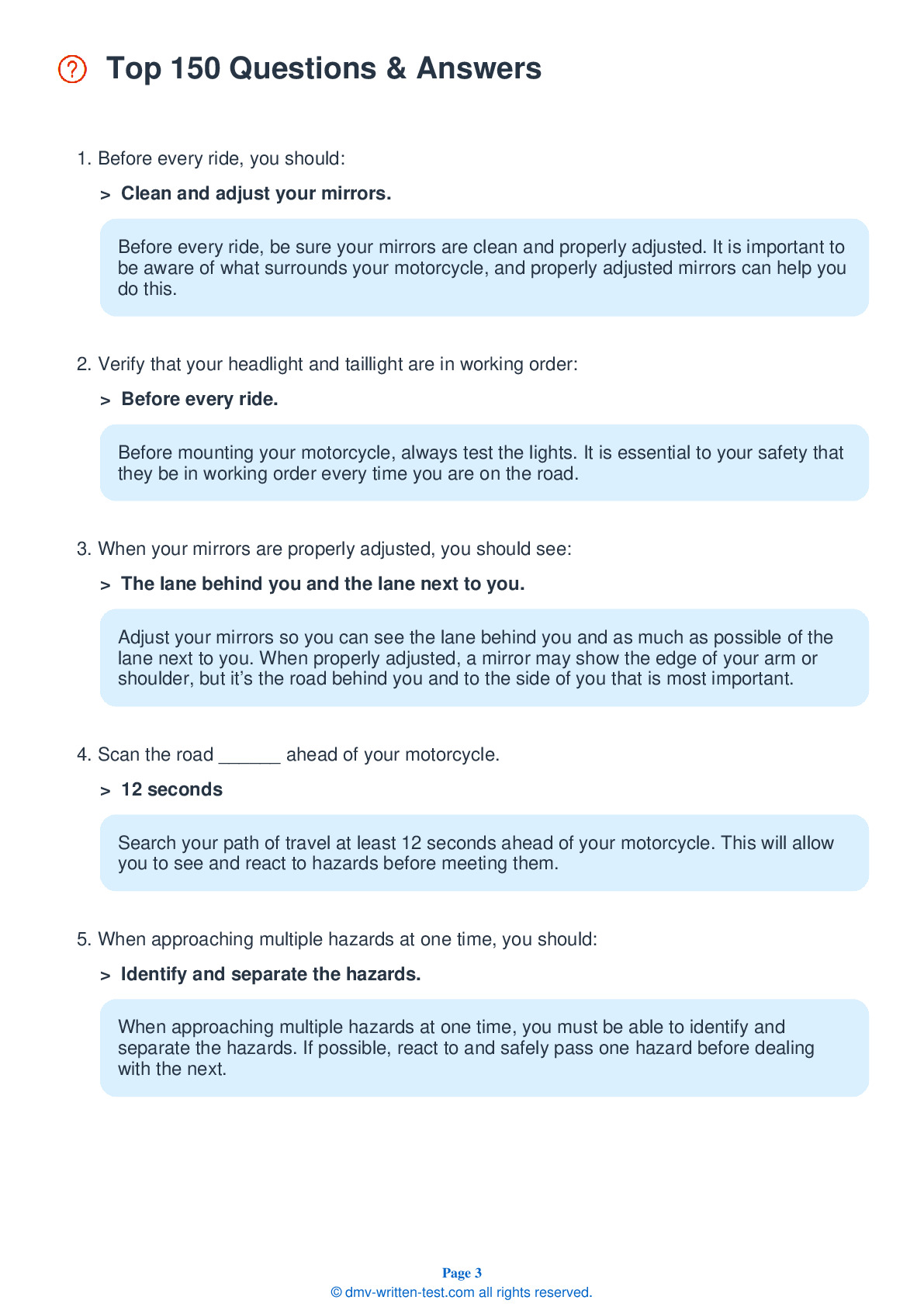2025 Kansas Motorcycle Permit Test 5
The following questions are from real DMV written motorcycle permit tests. These are some of the actual permit questions you will face in Kansas when getting your motorcycle learners permit. Each motorcycle theory practice test question has three answer choices. Select one answer for each question and select "grade this section." You can find this button at the bottom of the drivers license quiz. For a complete list of questions and answers for Kansas please visit https://cheat-sheets.dmv-written-test.com/en/kansas/motorcycle.
Number of Tests
Number of Question
Passing Score
1. What does this sign mean?

Explanation
Warning signs are yellow with black lettering or symbols and provide important information to motorists about upcoming road conditions. This sign warns that the roadway ahead is likely to be slippery when wet.
2. To reduce the chances of a collision, a motorcyclist should:
Explanation
To reduce the risk of being involved in a collision, consistently scan your path of travel at least 10 to 15 seconds ahead of your motorcycle. Scanning the road ahead will give you time to react to a hazard before meeting the hazard.
3. When braking on a motorcycle:
Explanation
Use both brakes every time you slow down or stop. If you use only the rear brake when stopping normally, you may not develop the habit or the skill to use the front brake properly when you really need to stop quickly.
4. If your rear wheel locks up while you are stopping on a surface with good traction, you should:
Explanation
If you accidentally lock the rear wheel while stopping on a surface with good traction, you can keep it locked until you have completely stopped. Even with a locked rear wheel, you can control your motorcycle if it is upright and traveling in a straight line.
5. Riding directly alongside another vehicle is:
Explanation
It is not advisable to ride beside passenger vehicles or trucks. Doing so may place you in another vehicle's blind spot and the driver could move into your lane without realizing you are there.
6. If you need to react to a hazard in the road, do not:
Explanation




